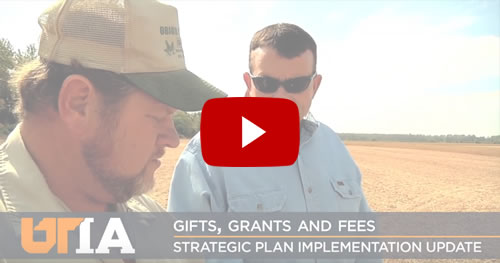GOAL:
Expand UT Extension partnerships, funding, and infrastructure.
Outcome: Purchased a 4-H facility in the Western Region
Purchased a 4-H facility in the Western Region and developed a Master Plan for a 4-H camp and conference center. The proposed site, Lone Oaks Farm in Hardeman County, was acquired in December 2015.
The team was charged with establishing a premier, multipurpose West Tennessee 4-H Center in order to renew facilities and equipment to meet the changing educational needs of communities.
Team Chair: Tim Smith
Committee Members: Keith Barber, Jim Byford, Donna Eason-Pile, Matt Fennell, Staci Foy, Robert French, Kenny Herndon, Elaine Lovelace, Terry Quillen, Dawn Richardson, Tim Roberts, Daniel Sarver, Ben Sanders, Steve Sutton, Sharon Tubbs, and Ben West
Outcome: Training on External Funding
The team offered three regional trainings that covered topics related to seeking, obtaining, handling, managing, and utilizing external funds. More than 135 employees attended these trainings. Recordings of the trainings are posted on the EESD website for those who were unable to attend these sessions. A contact person for Extension within the Office of Sponsored Programs was designated.
The team was charged with increasing funding to accomplish Extension’s mission.
Outcome: Office Standards for Customer Service and Facilities
Office standards for customer service and facilities were developed and introduced. The standards identified guidelines for building or remodeling office space, customer service, professionalism, and media relations. An internal website was developed for easy access to the information.
The team was charged with developing standards for all Extension facilities in order to renew facilities and equipment to meet the changing educational needs of communities.
Team Co-Chairs: Robert Burns and Shirley Hastings
Committee Members: Kaye Avrit, Janet Cluck, Joseph Donaldson, Tim Fawver, Ranson Goodman, Connie Heiskell, Mary Beth Henley, Martha Keel, Walter Malone, Tyrone Miller, Cam Philbeck, and Justin Stefanski. Ex-officio: Liz Teston and Ann Fairhurst
